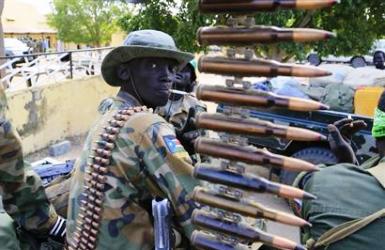Uganda serves as main conduit for weapons to South Sudan: report
November 29, 2018 (JUBA) – A new report released by a London-based independent investigation group says the Ugandan government was the main conduit for weapons including military and surveillance aircraft to the South Sudanese army.

In return, CAR says that the South Sudanese army and its allied non-state forces from Sudan ” have acquired small arms and ammunition that at least two EU member states—and the Slovak Republic—have exported to Uganda since 2014, despite longstanding EU arms embargoes on Sudan and South Sudan”.
For the European weapons, the report says Ugandan ministry of Defence in 2014 through a company registered in Seychelles imported several thousands of small arms and several million rounds of ammunition from Bulgaria, Romania and the Slovak Republic.
The report further reveals that the South Sudanese army acquired a surveillance aircraft, Diamond DA42 in July 2015 and one L-39 jet trainer/ground attack aircraft in July 2016.
Based on commercial documents and interviews with people involved in the transfer of the aircraft, CAR said a number of companies owned and operated by Israeli, Ugandan, UK, and US citizens based in Uganda acquired the aeroplanes, before one of these companies, Yamaseco transfer it to the SPLA with training and crew.
In response to the continual violations of a cessation of hostilities reached in December 2017, U.S. administration established a weapons embargo on South Sudan in February 2018.
Also, in July of this year, Washington successfully convinced the United Nations Security Council to endorse a resolution imposing an arms embargo on South Sudan until 31 May 2019.
Since then, UN and US officials have repeatedly called on the neighbouring countries particularly Uganda to observe the weapons embargo.
For the Sudanese weapons to the main armed group opposition group, the report says the SPLA-IO forces have increasingly relied on captured SPLA materiel to sustain fighting.
“Excluding two large weapon seizures that almost certainly derived from cross-border supplies from Sudan, at least 33 per cent of SPLA-IO and allied forces’ ammunition documented by CAR since May 2014 matches ammunition (with identical headstamps, lot, or batch numbers) that CAR has documented in service with SPLA forces,” CAR says.
(ST)
